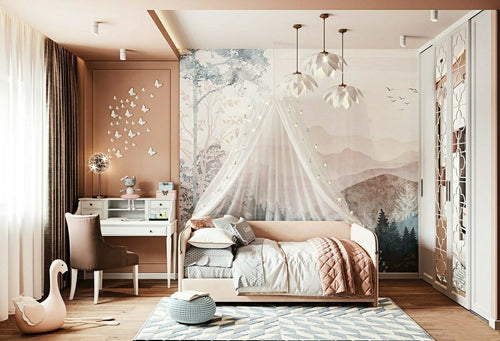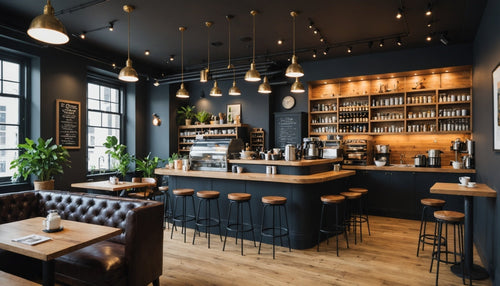Lighting is one of the most important elements of home décor, yet many of us overlook its power to transform a space. Whether it’s a living room, kitchen, or bedroom, the right lighting can enhance the atmosphere, provide necessary functionality, and even affect our mood. However, it’s easy to make common mistakes that can hinder the full potential of your lighting design. Below, we explore the most common lighting errors and how to fix them to ensure your home is well-lit, stylish, and comfortable.
1. Ignoring Layered Lighting
One of the most frequent mistakes is relying too heavily on a single light source. A single overhead light or table lamp can feel harsh or leave some areas of the room underlit. The solution? Layer your lighting. Layered lighting combines ambient, task, and accent lighting to create a balanced, functional, and aesthetically pleasing environment.
- Ambient lighting provides general illumination for the entire room (e.g., ceiling lights, recessed lighting).
- Task lighting helps with specific activities like reading or cooking (e.g., desk lamps, under-cabinet lighting).
- Accent lighting highlights features like artwork or plants (e.g., spotlights, wall sconces).
By incorporating all three types of lighting, you'll avoid the flat, dimly-lit spaces that come from relying on one source.
2. Using the Wrong Bulb Colour
Choosing the wrong bulb colour can significantly affect the mood of your room. Cool white bulbs (typically 4000K-5000K) can create a sterile, harsh atmosphere, which is ideal for workspaces but not for a cozy living room or bedroom. On the other hand, warm white bulbs (2700K-3000K) create a soft, inviting glow that’s perfect for relaxation.
To avoid this mistake, choose the right bulb colour for the room’s purpose. For living rooms and bedrooms, opt for warm, soft lighting to create a calm ambiance. For kitchens or offices, cooler bulbs provide the necessary brightness and focus.
3. Overlooking Natural Light
Many people focus solely on artificial lighting and forget about the importance of natural light. Natural light not only saves on energy but also improves your health and well-being. If possible, let natural light flood your spaces by using sheer curtains or window blinds that allow light to enter without compromising your privacy.
When arranging furniture or selecting light fixtures, make sure you consider the direction and amount of sunlight your room receives during the day. During the evening, try using light fixtures that mimic natural light to complement the fading daylight.
4. Placing Lights in the Wrong Spots
Improperly placed light fixtures can cause glare, shadows, or uneven lighting. For example, placing a light source directly above or behind a sitting area can create unwanted shadows or eye strain. To avoid this, position your light fixtures to direct light where it’s needed most.
Consider task areas—like reading corners or workstations—and ensure they have focused light sources. Additionally, be mindful of the light’s direction. Directional lighting, such as adjustable wall sconces or pendant lights, allows you to illuminate specific areas of the room.
5. Forgetting About Dimmers
Bright lights can be too much for some rooms, especially during the evening when you want to relax. Installing dimmer switches is a simple fix for controlling the light’s intensity. Dimmer switches allow you to adjust the lighting level based on your mood and activity.
Dim lights can be a great choice for dining rooms, bedrooms, and living rooms, while brighter settings are more suitable for tasks like cooking or working. With dimmer switches, you have the flexibility to adapt your lighting to various situations.
6. Not Considering the Size of the Room
The size of the room plays a crucial role in how much lighting is required. In larger spaces, relying on a single overhead light can leave parts of the room underlit. In smaller spaces, you may find that a single pendant or wall light is more than enough.
For larger spaces, consider using multiple light sources or incorporating layered lighting. In smaller spaces, strategic placement of light fixtures can help to create a brighter, more inviting environment without overwhelming the room.
Conclusion
Lighting is a powerful tool in home décor, and with a few adjustments, you can greatly enhance the ambiance of any room. By avoiding common lighting mistakes and making thoughtful choices in your design, you can create a space that is both functional and visually appealing.
At Orangme, we offer a wide variety of lighting options, from sleek modern designs to elegant fixtures that can complement any room. Explore our selection to find the perfect lights for your home, and transform your spaces with the right lighting solutions today.
Ready to elevate your home lighting? Browse Orangme's collection of stylish lighting options and find the perfect fixtures to suit your space!


















































